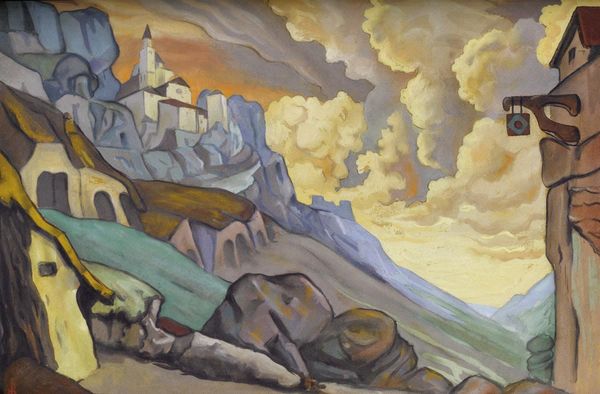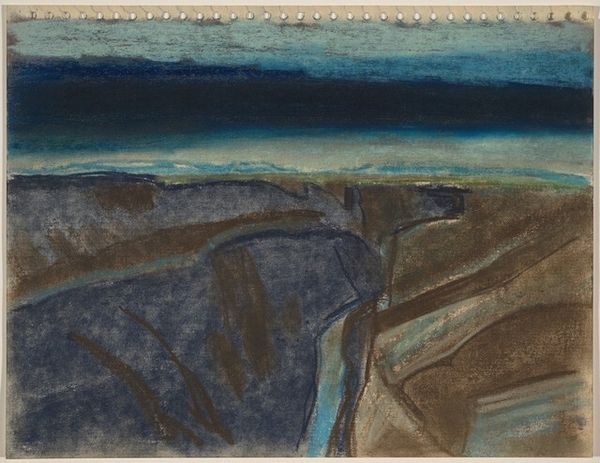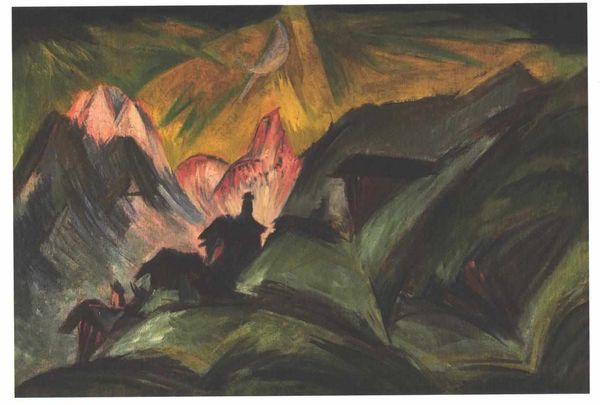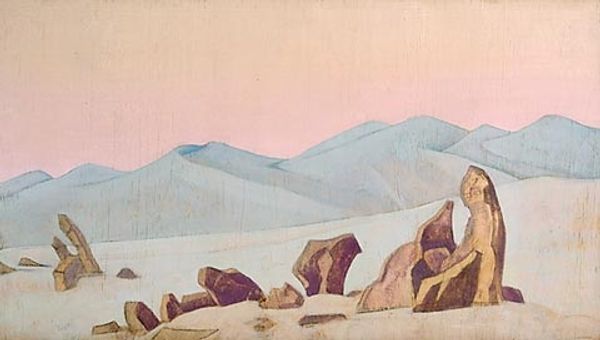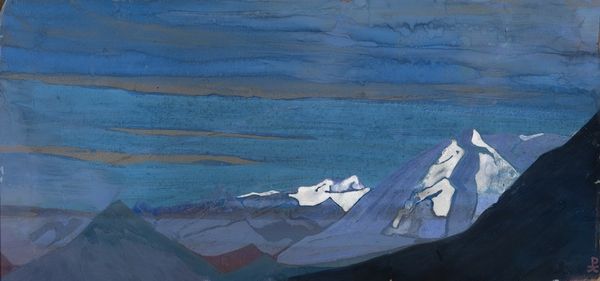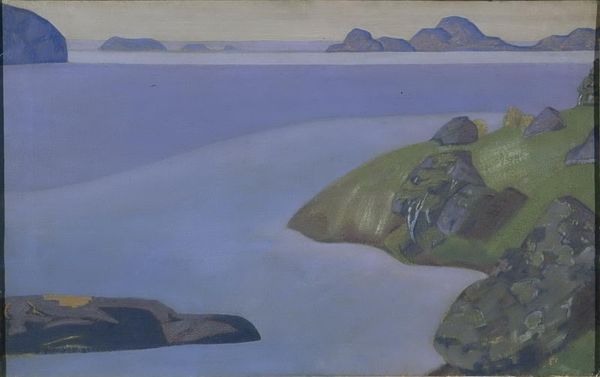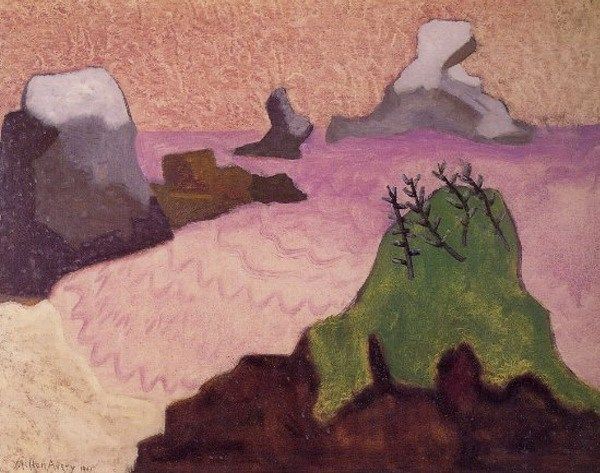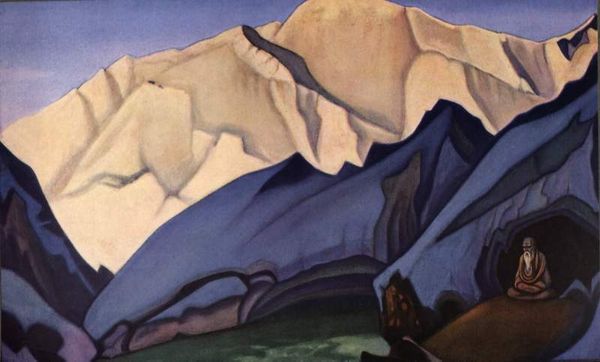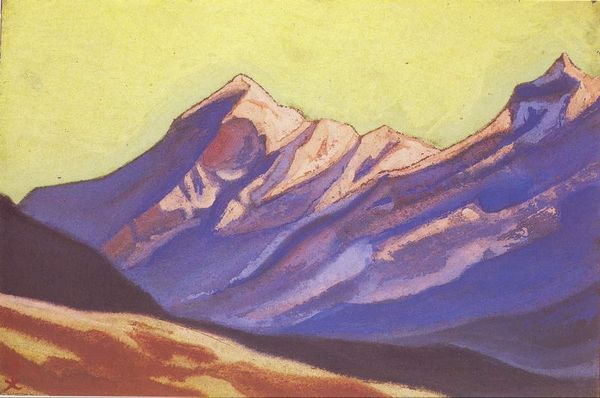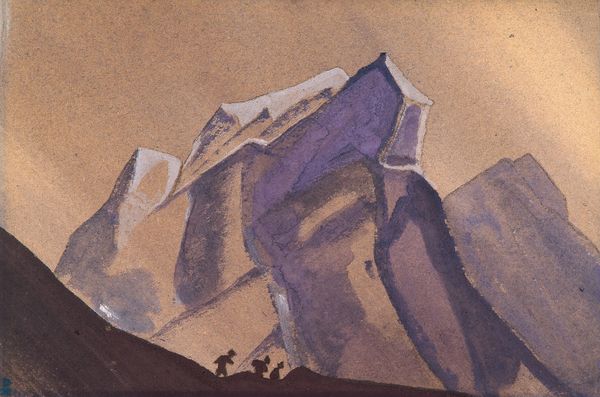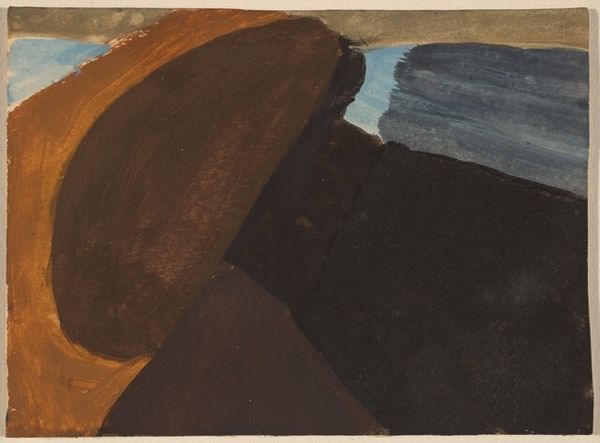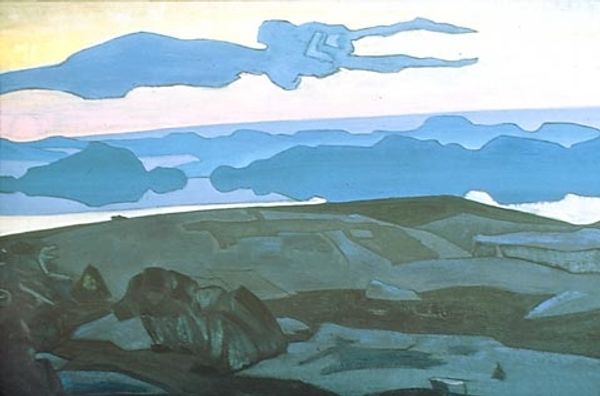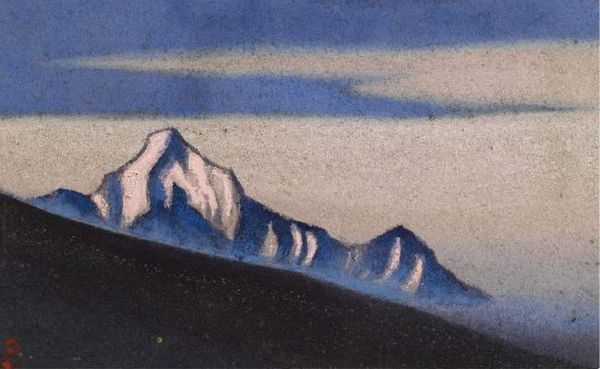
Copyright: Public domain
Editor: Here we have Nicholas Roerich's "Ellora," created in 1938 using oil paint. There's something both monumental and deeply unsettling about this depiction of the caves. How do you interpret this work? Curator: What interests me most are the conditions of production surrounding a piece like this. Consider Roerich's materials – oil paints manufactured, distributed, and made accessible within a complex industrial system. How does the availability and standardisation of such materials influence his artistic decisions? Editor: That’s an interesting point. I tend to focus more on the subject. Curator: But the subject itself, the caves at Ellora, represents a huge investment of human labor. They are not merely found forms, but were shaped through a massive expenditure of time and resources. It begs the question: what does it mean to depict such a site, particularly during the pre-war period of 1938? Is he aestheticizing labor, or commenting on the clash between nature and industry through this artistic landscape? Editor: So, you see the painting less as a straightforward representation of a place and more as an exploration of the human effort embedded within the place and materials used? Curator: Precisely. Consider too how the paint is applied; thick impasto in areas suggesting a laborious, physical process mirroring, in a very small way, the carving of the Ellora caves themselves. Doesn't that make you think differently about it? Editor: It really does! I'd only considered the obvious aesthetic elements, not the underlying labor both in its creation, and what the painting represents. Curator: And the commercial element - who would have commissioned such work at the time and what statement about the culture were they making? Fascinating, isn't it? Editor: Definitely food for thought. Thank you for sharing such a different perspective.
Comments
No comments
Be the first to comment and join the conversation on the ultimate creative platform.
